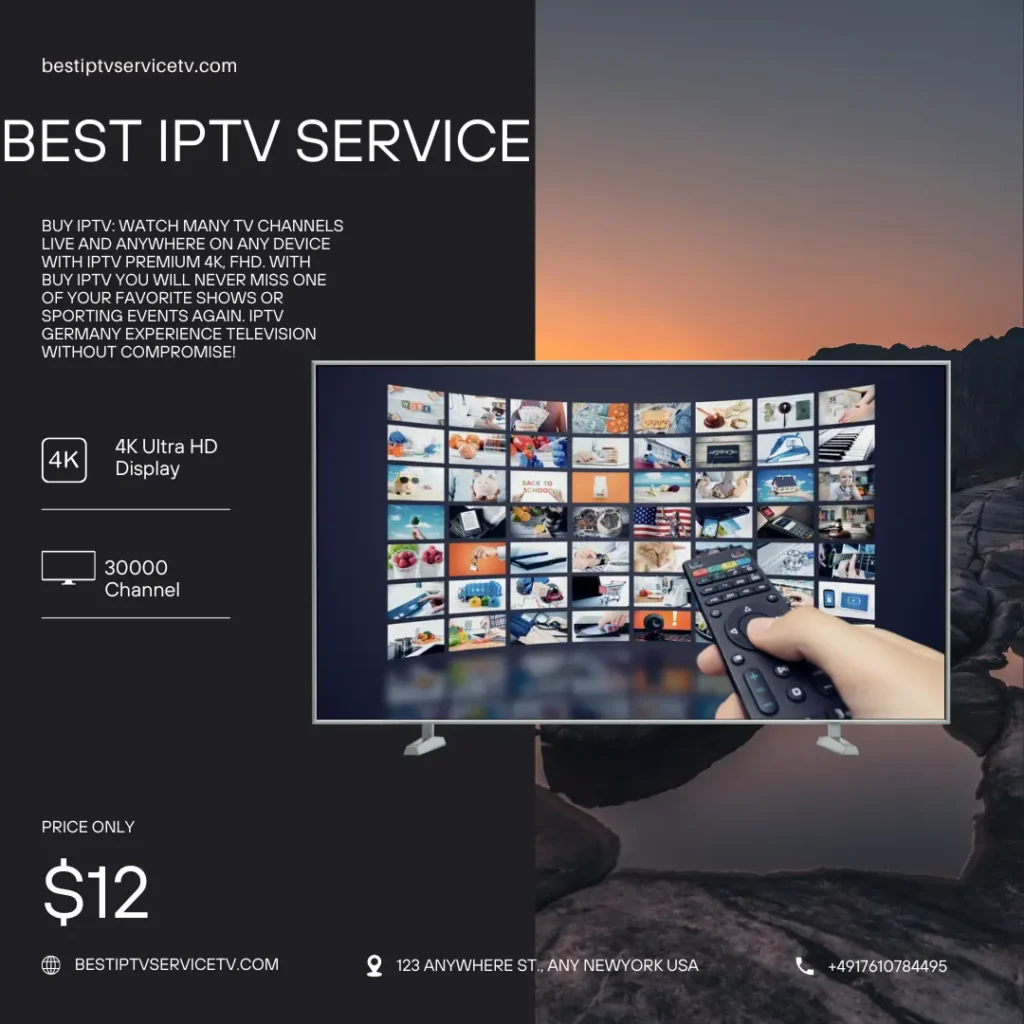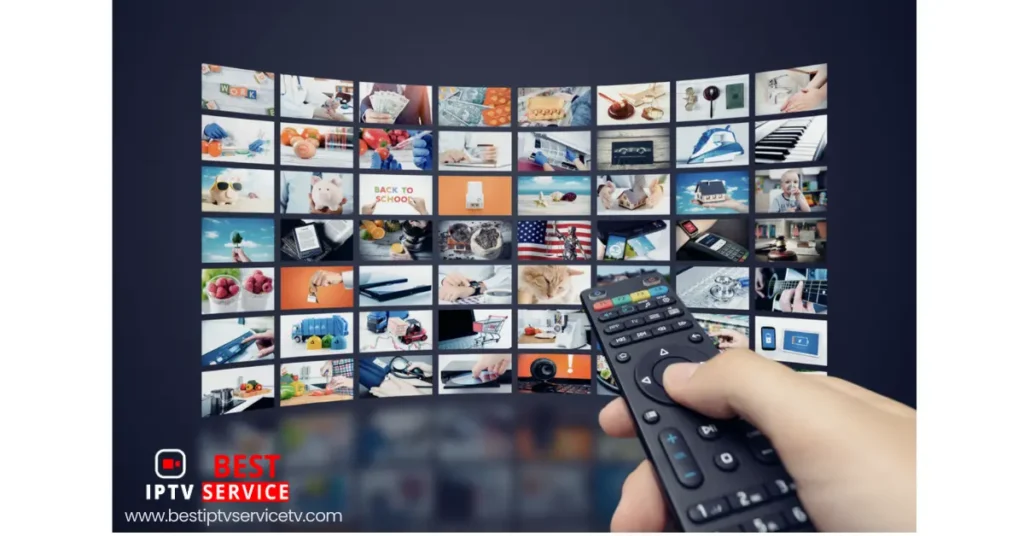We lead in live streaming technology, knowing how crucial IPTV streaming solutions are for professional broadcasting. At the heart of captivating and keeping audiences is the encoder. It’s a key part that can’t be overlooked. Our dedication to top-notch professional broadcasting equipment is shown through our advanced IPTV encoders.

These tools are more than devices; they’re the way to deliver smooth, high-definition content. They make the viewer’s experience better, whether for live events, corporate messages, or shows.
In the next parts, we’ll explore the details of modern streaming and the important role of IPTV encoders. We’ll look at key features and the strong abilities of top products like the Vecaster 4K IPTV Encoder. We’ll also compare them to industry standards.
Table of Contents
Join us as we uncover what affects streaming quality and how to make the best settings for top broadcasting.
Key Takeaways
- Learn how IPTV encoders make stunning high-definition streams possible.
- Discover the advantages of using high-quality equipment for streaming.
- Get ready for in-depth looks at top IPTV encoder features in future sections.
- Find out why the right encoder settings are crucial for great viewer engagement.
- Look forward to a detailed guide on setting up and fixing your IPTV encoder.
- Compare market options to make smart choices when buying.
Understanding IPTV Encoders in Modern Streaming
In today’s streaming world, IPTV encoders play a key role. They turn video into a digital format for internet transmission. This makes digital video broadcasting available worldwide.
IPTV technology brings new interactive services to viewers. It changes traditional signals into digital streams. This makes high-quality video easy to share on various devices.
| Feature | Benefit | Relevance to Streaming Innovation |
|---|---|---|
| Real-time encoding | Allows live streaming with minimal delay | Essential for sports, live auctions, and other time-sensitive broadcasting |
| High-definition support | Delivers superior image quality | Improves viewer experience, matching the expectations for HD content |
| Compatibility across devices | Streams can be accessed on TVs, smartphones, and tablets | Enhances the reach of digital video broadcasting |
| Multi-protocol support | Supports various streaming protocols | Flexible delivery to different platforms, including private networks and the internet |
The growth of streaming innovation has changed how we access content. IPTV encoders are now crucial for how we watch media today.
The Importance of Broadcast Quality in IPTV
In today’s media world, giving viewers top-notch streaming is key. It keeps them happy and meets strict broadcasting rules. This is especially true for IPTV, where broadcast quality can set one service apart from others.

Defining Broadcast-Quality Standards
Standards for IPTV broadcast quality include resolution, frame rate, and bit rate. These factors affect video clarity, smoothness, and sharpness. For example, a resolution of at least 1080p is seen as a minimum for quality in today’s market.
The Impact of Quality on Viewer Engagement
Good broadcast quality boosts viewer engagement. Streaming that’s clear and smooth cuts down on viewer fatigue. It makes for a better viewing experience, leading to more viewers staying and being happier.
| Feature | Impact on Viewer Engagement |
|---|---|
| 1080p Resolution | Increases clarity and detail reception, enhancing viewer involvement and reducing strain. |
| High Frame Rate | Provides smoother motion, keeping viewers engaged during fast-paced scenes. |
| Optimal Bit Rate | Ensures consistent quality without buffering, crucial for maintaining viewer attention. |
In summary, strong broadcasting standards in IPTV are vital. They ensure high-quality streaming and keep viewers happy and loyal.
Key Features of Top Broadcast Quality IPTV Encoders
In today’s digital world, content must meet high standards for quality and speed. Top IPTV encoders are key for delivering these high-quality experiences. Let’s look at the essential features that make these devices stand out.
High-Definition Streaming Capabilities
Modern IPTV encoders support high-definition and 4K streaming. This ensures every detail is clear and precise. It meets the demand for top-notch visual experiences, whether it’s sports or live concerts.
Low-Latency Performance for Real-Time Broadcasting
Low-latency technology is crucial for IPTV encoders. It’s vital for live broadcasts, like sports or news, where timing is everything. These encoders use advanced tech to cut down on delays, making live streaming feel real-time.
These encoders are more than tools; they’re key to a broadcasting strategy focused on viewer satisfaction. They ensure smooth delivery of live and interactive content, playing a vital role in the broadcasting world.
| Feature | Benefits | Use Case |
|---|---|---|
| 4K and Ultra HD Support | Enhanced visual experience with sharper images | Live sports broadcasting, Concert streams |
| Low-Latency Broadcasting | Near real-time streaming, improved viewer interaction | Live interviews, Real-time events coverage |
| Robust Encoding Options | Flexibility in content delivery across different platforms | Multi-platform streaming, Tailored content delivery |
The Vecaster 4K IPTV Encoder: A Deep Dive
The Vecaster 4K IPTV encoder is known for its top-notch streaming quality. It’s not just about better visuals. It also makes sure viewers have a smooth experience.

Unpacking 4K Streaming Potential
The Vecaster 4K IPTV encoder leads in streaming technology with 4K resolution. This clarity changes the game for streaming, making visuals so sharp it feels like you’re right there. It meets the need for high-quality digital content.
Connectivity and Compatibility
The Vecaster 4K IPTV encoder is great for many broadcasting needs. It has HDMI, SDI, and IP outputs for easy setup. It also works with many streaming protocols and platforms, showing it’s ready for new tech.
| Feature | Description |
|---|---|
| Resolution Support | Up to 4K Ultra HD |
| Output Options | HDMI, SDI, IP Streaming |
| Compatibility | Supports major streaming protocols and platforms |
| Design Quality | Robust, designed for continuous high-performance operation |
The Vecaster 4K IPTV encoder is a game-changer in broadcasting. It goes beyond the usual standards for streaming. It’s a must-have for anyone aiming to deliver top-notch video content.
Advent of HDMI IPTV Encoders in the Market
HDMI IPTV encoders have changed the broadcasting world. They make it easier for content creators to share high-quality video streams. These devices work well with many HD sources, helping broadcasters do more with less effort.
One big plus of HDMI IPTV encoders is how easy they are to set up. They work right out of the box, making it simple for anyone to start broadcasting fast. This is great for producers who need to get things done quickly.
- HDMI input ensures compatibility with a wide range of digital video sources.
- Plug-and-play installation minimizes downtime and technical challenges.
- Enhanced broadcasting quality that meets professional standards.
For those who handle both work and personal broadcasting, HDMI IPTV encoders are a big help. They improve video quality and ensure it works well every time. This makes them key tools for today’s streamers.
Multi-Channel Streaming with an HD 16 Channel IPTV Encoder
Today’s broadcast world needs high-definition video and the ability to handle many streams easily. Our HD 16 channel IPTV encoder leads in multi-streaming technology. It offers top network efficiency for the complex needs of modern broadcasting.
Efficiency in Delivering Multiple Streams
Using an HD 16 channel IPTV encoder makes it easier to send out different channels at once. It’s not just about sending content. It’s about keeping each stream clear and reliable, whether it’s sports, news, or special events.

Stream Management for Large Networks
Our advanced IPTV encoder makes managing big networks easier. It’s all about network efficiency, especially with many channels. The encoder uses bandwidth well without losing video quality, which is key for providers aiming to reach more people.
- Centralized Control: All streams are managed from one place, making adjustments and monitoring easier.
- Error Correction: It has built-in error correction for smooth streaming, even in poor network conditions.
- Adaptive Streaming: The encoder adjusts stream quality based on viewer bandwidth, ensuring a great viewing experience.
In today’s world, viewers want variety and quality. Our HD 16 channel IPTV encoder is key for broadcasters wanting to grow their offerings. With multi-streaming technology and strong network efficiency, they can offer lots of high-definition content that meets today’s viewer standards.
Cutting-Edge Advances with the HEVC IPTV Encoder
The world of video streaming has changed a lot with the HEVC IPTV encoder. It uses the powerful H.265 compression codec. This codec lets broadcasters and streaming services send high-quality content. They do this while saving bandwidth, making the viewer’s experience better.
Understanding HEVC/H.265 Compression
H.265, or High Efficiency Video Coding (HEVC), is a new technology. It makes video files about half the size of H.264. This is key for sending high-resolution content like 4K and 8K without using too much bandwidth.
Using the HEVC IPTV encoder means a smooth streaming experience. It keeps the content’s quality and integrity.
Benefits of HEVC Technology in IPTV Encoding
HEVC technology in IPTV encoding brings many benefits, especially in saving bandwidth. Saving bandwidth is important because it affects the cost and how much you can stream. With less bandwidth needed, providers can send better quality streams, even with limited networks.
This means more people can enjoy high-quality content. The HEVC IPTV encoder works well on many platforms. It makes sure content is delivered fast and in top quality, no matter the source.
By keeping up with these tech advances, we’re ready for today’s streaming needs. We’re also ready for what the future holds in digital broadcasting.
Optimizing Your IPTV Stream with the Right Encoder Settings
Improving your IPTV service starts with fine-tuning video and audio settings. Encoder settings are key to delivering content smoothly. Knowing how to set these up can greatly enhance your viewers’ experience.
Best Practices for Video Quality and Compression
Optimizing video quality means finding a balance between quality and bandwidth. To get the best video, consider these factors:
- Bitrate settings depend on the content type. Sports need high bitrates, while shows with lots of talking can get by with lower ones.
- Resolution and frame rate should match the screen size. Bigger screens need higher settings, but they use more bandwidth.
- Choosing the right codec, like H.264 or HEVC, affects how well it compresses and works with different devices.
Audio Configuration for Optimal Sound Delivery
Good audio and video sync are crucial for a great broadcast. Here’s how to set up audio:
- Choose an audio codec that keeps audio and video in sync. AAC is a good choice for its quality and efficiency.
- Adjust audio bitrates based on the sound complexity. More complex sounds need higher bitrates to stay clear.
- Test your audio on various devices to catch any sync issues.
By following these tips, your IPTV streams will be optimized for today’s networks and ready for tomorrow’s tech.
Installation and Setup Guide for Your IPTV Encoder
Starting your IPTV encoder setup can really boost your streaming. We’ve got a detailed guide to help you get your encoder working well. We also have tips for common problems to make your setup smooth.
Step-by-Step Encoders’ Installation Process
First, make sure you have everything: your IPTV encoder, internet, power, and video sources. This easy guide will help you avoid common mistakes:
- Connect your video source (like a camera or computer) to the IPTV encoder with the right cables.
- Use an Ethernet cable to connect the IPTV encoder to your network for a stable internet connection.
- Turn on your encoder and all connected devices.
- Go to the encoder’s web interface on your computer to set up streaming. Use the IP address from your encoder’s manual in your browser.
- Choose the stream settings like resolution, bitrate, and codec for your needs.
- Test the stream to make sure it’s working right.
Troubleshooting Common Setup Issues
Even with a good guide, problems can still happen. Here are tips for fixing common issues:
- No Power: Check that all cables are plugged in right and the power source works. Look for any blown fuses or tripped breakers.
- No Network Connection: Make sure the Ethernet cable is well connected to both the encoder and your router. Try a new cable if you still have no connection.
- Poor Stream Quality: Change the bitrate and resolution settings. If your network is busy, consider a faster internet plan.
- Cannot Access Web Interface: Double-check the IP address you entered in your browser matches the encoder’s. Check your manual for the right IP and how to fix it.
By following these steps and tips, you can set up your IPTV encoder successfully. You’ll be ready for any problems that come up. Happy streaming!
Comparing IPTV Encoders: What to Look for When Shopping
When it’s time to upgrade or start your streaming setup, choosing the right encoder is key. We want to make comparing encoders easy for you. By focusing on what matters most for your needs, we help you find the best option. Understanding the details of hardware and value for money is crucial for now and the future.
Evaluating Hardware Specifications
First, check the hardware specs of the IPTV encoder. Make sure it fits your streaming goals. Look at the inputs and supported resolutions. They should match today’s broadcasting standards.
Also, consider the encoding standards and network capabilities. From H.264 to H.265, your choice affects content quality and accessibility. We aim to help you make a choice that meets your needs now and in the future.
Assessing Cost-Effectiveness and ROI
Lastly, think about cost-effectiveness and return on investment (ROI). The initial price is just the start. Consider how the encoder will save you money and improve your service over time. Our advice focuses on long-term benefits and savings, ensuring your investment is worth it.
FAQ
What are IPTV encoders and how do they impact video streaming quality?
IPTV encoders change video into a digital format for streaming over the internet. They ensure high-quality video and improve the viewer’s experience. They’re crucial for broadcasting high-definition content reliably.
What standards define broadcast-quality video for IPTV?
For IPTV, broadcast-quality video meets certain standards. It includes HD or 4K resolution, a 60fps frame rate, and a high bit rate. These ensure clear and detailed video without quality loss.
What critical features should a top-quality IPTV encoder have?
A top-quality IPTV encoder should support 4K streaming and have low-latency for live broadcasts. It should also work with various protocols to meet today’s streaming needs.
How does the Vecaster 4K IPTV Encoder enhance streaming services?
The Vecaster 4K IPTV Encoder allows for 4K streaming, making content clearer. It has multiple connections like HDMI and works with different protocols. This helps providers offer high-definition experiences.
Why are HDMI IPTV encoders becoming popular in the streaming market?
HDMI IPTV encoders are popular for their easy setup and HDMI interface. This makes connecting video sources and encoders simple. It’s great for both business and personal use.
What advantages do HD 16 Channel IPTV Encoders offer for broadcasting?
HD 16 Channel IPTV Encoders deliver multiple streams efficiently. This is key for network performance and distributing content widely. They support a wide range of channels and services.
How does HEVC IPTV encoder technology optimize streaming?
HEVC IPTV encoder technology uses the H.265 codec. It allows for better quality video at lower bit rates. This improves streaming of 4K content without losing video quality.
What are best practices for optimizing IPTV streaming with encoders?
To optimize IPTV streaming, adjust video quality and compression. Also, set up audio for clear delivery. This ensures a great viewing experience for the audience.
What should users know about installing and setting up IPTV encoders?
When setting up IPTV encoders, follow a step-by-step guide. Connect to video sources and networks. Knowing common issues and how to fix them is also important.
How should buyers compare IPTV encoders to determine the best choice?
Buyers should compare IPTV encoders by their hardware, encoding standards, and network capabilities. Consider cost-effectiveness and the potential return on investment. Think about both the initial cost and long-term savings.
